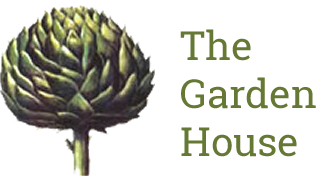Winter Pruning of Apple and Pear Trees
Posted:2 February 2014
Winter pruning of apple and pear trees should be carried out when the tree is dormant, between leaf fall and bud burst (usually between November and early March).
Back in January we held a workshop led by Irene Fletcher of the Ventnor Botanic Garden aimed at de-mystifying the art of fruit tree pruning. Many people believe tree pruning to be a difficult, daunting task, but this need not be the case!

Irene’s lecture and practical demonstrations included information on appropriate tools and a question and answer session. She started by highlighting the importance of using the right tools for the job – a good quality pair of sharp secateurs, pruning saw and/or loppers.

The most obvious reason for pruning is to ensure a good crop of fruit the following season. By reshaping to create an open goblet shape with a framework of about five main branches, the tree size is contained, and diseased and damaged branches removed, ensuring a healthy and productive tree that will live for many years. Fruit trees that are not properly cared for often become unproductive and diseased, frequently causing them to die prematurely, they become less productive and congested with old branches.
- Start by removing crossing or obviously damaged, dead or diseased branches
- Aim to keep the centre of the tree open (like an empty goblet), if it is necessary remove large branches do this over several winters.
- Cut back any overlong branches to a vigorous lower branch
- Check whether your tree is a spur- or tip-bearer – so whether the tree fruits on spurs or towards the tips of shoots made the previous summer
Spur-bearing varieties:
- Shorten the previous year’s growth on each main branch by about one third to a bud facing in the required direction to encourage the development of new branches and spurs
- Cut back any young laterals (sideshoots) growing from the main framework to five or six buds if there is not enough space to allow them to grow as secondary branches
- Remove any badly-placed shoots
- On older trees, remove any spur systems that have become overcrowded
Tip-bearing varieties:
- Prune the previous year’s growth on each main branch and the most vigorous laterals (sideshoots) to the first strong bud. Leave unpruned laterals less than 30cm (1ft) long
- Cut back a proportion of older fruited wood to a young shoot or leaf bud to reduce congestion


